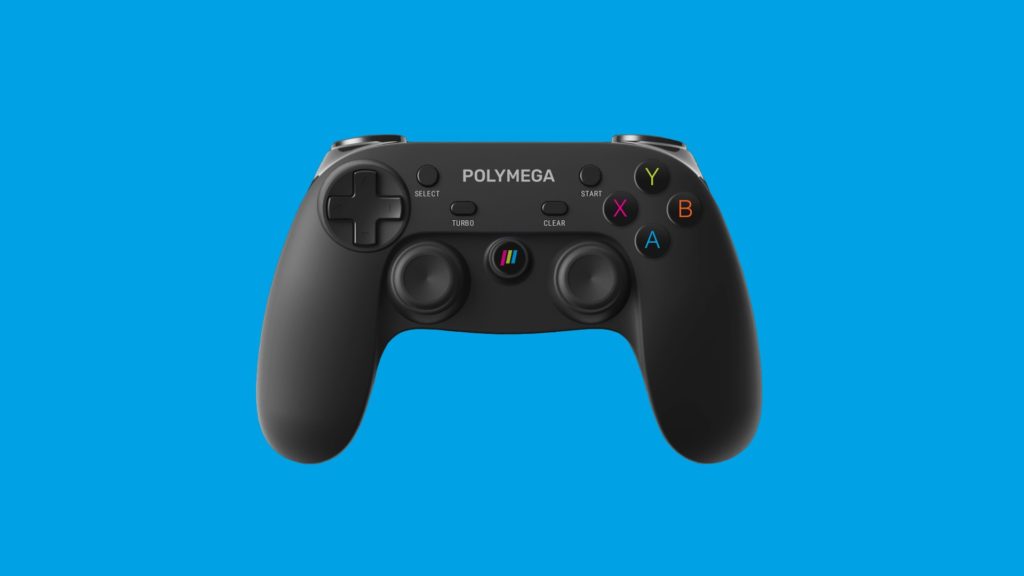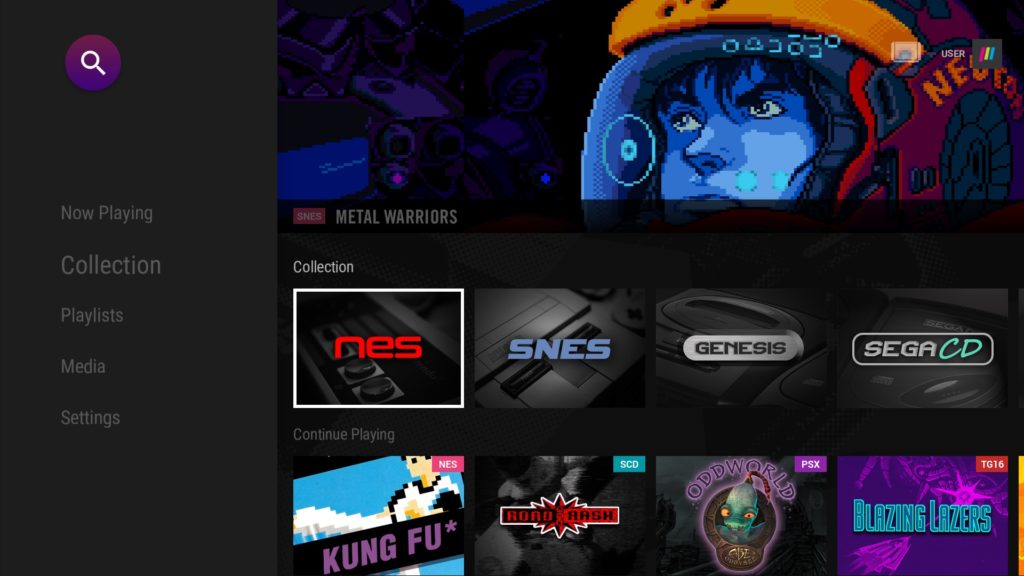Retro gaming has seen a resurgence in recent years, thanks in part to the often nostalgia-fueled indie scene. However, it is becoming increasingly difficult to replay many older titles in ways that don’t involve the legal greyness of roms and .ISO files. Though devices like the NES Classic and the Retron series offer limited solutions, they often lack longevity due to small built-in libraries, limited hardware support and problematic emulation. For Bryan Bernal and Eric Christensen, addressing these issues were key in the creation of their upcoming classic gaming console, the Polymega.
Formerly known as Retroblox, the Polymega is set up to be the most versatile classic gaming console on the market when it releases next year. Utilizing a modular design, players can relive their favorite titles from both disc-based and cartridge loading systems, including the PlayStation 1, Sega Genesis, Neo Geo CD, SNES and more.
I had the chance to ask Bernal some questions regarding the Polymega and its unique take on retro gaming.
GWW: Tell me about the philosophy behind the Polymega. What did you feel was missing from the market that drove you to make a console for classic titles?
BB: The design philosophy behind the Polymega is that we didn’t feel like there was a suitably capable system that plays all of our retro game collections in HD without the mess and clutter of modding and hooking up our retro systems. Our team are very serious about retro games, and we are not the type of people that look at 100% emulation-based consoles and feel like they do a good enough job of replacing classic hardware or FPGA (Field-Programmable Gate Array) implementations. We are more along the lines of people who would buy a product like the NT Mini or RetroUSB AVS. However, those only support one system (two if you include the Famicom/fds). The other high-quality FPGA solutions that exist also lack support for all of the systems we wanted to play, don’t really look like something that would go in your living room, nor do they consider the features that we would expect in a modern game console. So, we decided to make the product that we wanted to use in our own living rooms for playing retro games.
One of the Polymega’s biggest draws is its use of modular drives to play a variety of classic console games. What do these modules contain?
Modularity is a very important aspect of the Polymega, since it allows us to support potentially dozens of game consoles with one dedicated hardware base unit. The module allows you to play and backup games, use original wired controllers and play games that require Hybrid Emulation in order to be accurately reproduced. Once you’ve installed your game collection, you mainly will use it for wired controller connections and playing games that require the cartridge to be inserted to enable Hybrid Emulation.
The modules themselves contain a high quality custom-built cartridge edge connector (made in the USA by one of the top edge connector manufacturers in the world), controller ports, as well as various logic packages that support the needs of the individual console to play on the Polymega.
How does the team decide on which module to build next?
The team decides on what modules they build next by looking at what people are asking for and looking at the availability and effort to support the release of the module. A system that has a proprietary connector that is still patented would prevent us from releasing a module for that system until the time comes when we could. For other systems where this is not an issue, it’s simply a matter of effort and capability to get it done given everything else we are working on at this point in time. There’s a ton of work that goes into supporting a single module, and you can’t only look at it through the lens of the hardware itself. It’s the building of a new hybrid emulator, the assembly of a database to support all the games for the system, the localization (translation/region/territory support), and other matters that all play into the sequencing and release of new modules.
From the beginning, the Polymega team has touted Hybrid Emulation, a process which the public knows little about. Can you describe what hybrid emulation is and its benefits over other emulation techniques?
There’s a lot of misinformation and speculation out there about Hybrid Emulation, so let’s set the record straight. Hybrid Emulation is an emulator running on an embedded processor which can be hardware assisted based on the needs of the retro console being emulated. This means that we may sometimes use an extra chip or chips to simulate a particular processor rather than straight software emulation. Hybrid Emulation also means that we read cartridges in real time and do not dump the ROM to memory unless the user elects to install the game to the system so they can play without a cartridge or module inserted. [This method allows for] the modern bells and whistles that you can get from a modern system but with the compatibility of clone hardware/FPGA systems. By taking this “hybrid” approach, you get the best of both worlds [in an affordable manner.]
The team seems adamant on encouraging players to preserve their physical media without resorting to piracy by allowing them to rip games directly onto the console. Is this beneficial for games that rely on special hardware, like Star Fox, which relies on the SuperFX chip?
The games which rely on special hardware won’t be able to be installed to the system. To us, the quality of our product is reflected by how well it handles the games you are playing and how accurate the experience is to the original console. We feel that the special chips on some cartridges are best interfaced with directly rather than being emulated, so we will require the games we know have them to be inserted during playback. Luckily, most games out there will not require this, and having a connected console will allow us to update this functionality on a per-game basis as that understanding grows over time.
One important note is that you can add games to your collection without installing them […] you just won’t be able to launch the game unless the cartridge is inserted.
How is upscaling handled?
Upscaling is handled on the GPU of the Polymega. We render the frame at the original native resolution of the console then upscale it to whatever setting you have the system in on the Polymega at HD resolutions. This allows you to choose which way you want to view the game, including aspect ratios for pixel perfect, 4:3 and 16:9, as well as supporting virtual composite and RGB scanline modes on top of any of those aspect ratios.

Inspired by modern design, the Polymega’s default controller can be used across every available module.
While most accessories, like the PS1 Multitap, will work with the console. Are there any that will not be compatible?
Light guns will not work on the Polymega for now as we are HDMI only. We do plan to attempt to address this in the future, but it’s not currently a priority for the launch of Polymega. Most other accessories will work with the system, except for original hardware that does not have a direct interface into the Polymega.
What about third-party controllers? Can I use my 8BitDo controllers or DualShock 4?
The system includes a modern high speed bluetooth controller which should be the default controller for most players, and for those who are concerned about matters such as input lag, they’ll want to connect an original wired controller to the module for an ultra low latency gameplay experience. It’s as fast as a high quality HD upscaler unit like the X-RGB Mini Framemeister (but keep in mind that HDTVs, especially those without a “Game” mode, will introduce some minimal latency). [Regarding other controllers], there are reasons for and reasons against but we don’t have any announcements regarding them that we can make at this time.
Understandably, there is copyright that prevent modules like the N64 from being created. The team has made clear that everything the Polymega can play is done in a legal and copyright-free way. How many of these kinds of hurdles have the team faced and how have they managed to get over them?
For the N64, it’s more a matter of patents than copyrights. So, once those patents expire we can begin work on an N64 module. For our purposes, copyrights generally pertain to the BIOS of a supported disc system, which prohibits us from making use of it without license. So, it’s a challenge in that you need to take a legal route to re-writing a widely compatible BIOS, which is what our team has done for the systems we have announced.
While it takes a little time and elbow grease to get done, the advantage of this approach is not only that we can offer the ability to play optical disc based systems for the first time in a 3rd party console that doesn’t require you to go hunting around on the internet for BIOS files, but it has afforded us the ability to materially improve the original BIOS that improve the experience of using the consoles in question. For example, we’ve cut Neo Geo CD loading times by 80% in comparison to the original system in our custom Neo Geo CD BIOS.
The ability to broadcast to Twitch and YouTube is sure to an enticing feature for streamers of classic games. How much can we expect the app selection to expand? Will we see non-gaming apps like Netflix?
For now we’re working directly with Twitch to implement services that benefit our users directly on the system ourselves. As far as an app ecosystem where other companies can put their products and services on the Polymega, I wouldn’t expect to see something as robust as your standard current gen system or an Android box in the launch window, since our system is built custom, entirely in Linux. However, we do plan to grow the system and provide tools for companies to release new applications and projects on the system over time. Our current focus is making sure that the retro gaming focused services and features we’ve already announced work great first and foremost.
Finally, the team announced a while back that a Kickstarter campaign was imminent. Anything to announce?
Kickstarter is a means of crowdfunding the development of a product which is at a prototype phase. [After we announced the prototype] we raised enough money from private investors and corporations that we won’t need to rely on crowdfunding for development purposes anymore. At this point, we’re going to launch a pre-order campaign “when it’s done,” which may be on a crowdfunding sit or some other means. We plan to be at that point later this fall, and when that happens you’ll be able to pre-order the system which will have a target delivery of summer next year.
To learn more about the system, visit the official Polymega website and YouTube page.
All images courtesy of Playmaji, Inc.

